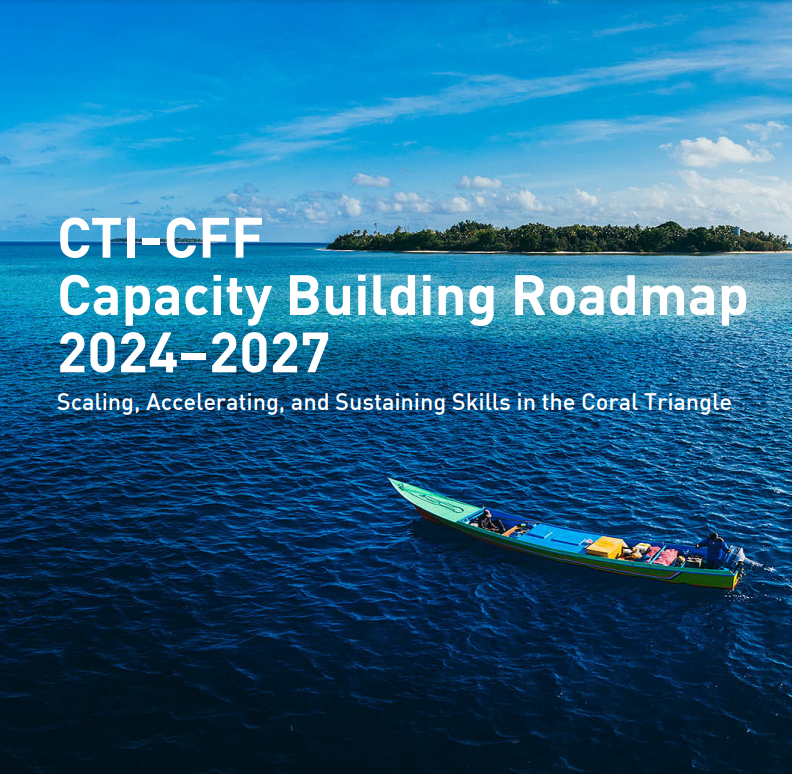Collaborative Learning Needed to Replicate Successful Marine Conservation Programs
Closer collaboration among development partners is needed to ensure the sustainability, scalability, and replicability of coastal and marine conservation programs, according to representatives of multilateral financial institutions (MFIs) who visited the Philippines recently.
“I think it’s about lessons of success. Success breeds success, and so what we need are models that can be upscaled and replicated in the Philippines, in the region, and other areas of the world,” said Nessim Ahmad, Environment and Social Safeguards Division Director of the Asian Development Bank (ADB).
Ahmad joined representatives of other MFIs on a field visit to Nasugbu, Batangas on 18–19 October 2013 to observe three marine protected areas (MPAs) in Hamilo Coast established through a public–private partnership with the developer of Pico de Loro Beach Resort. The field visit—organized by ADB and WWF-Philippines—came on the heels of the fall meeting of the MFI Working Group on Environment held October 16-18, 2013 at the ADB headquarters in Manila.
“The working group on environment all came to Manila to talk about how collectively we can do a better job of protecting the environment, environmental impact assessment, and a number of other issues,” Ahmad said. “It’s important that we learn the lessons they have been learning in Latin America, in Africa, and try and feed that into the process here as well. We’re very fortunate that all of the multilateral development banks coordinate very closely and share knowledge on how to address common concerns.”
After the group’s meeting, ADB and WWF-Philippines took the opportunity to bring the MFI representatives to one of the Coral Triangle Initiative sites in the Philippines to see for themselves the partnership among the private sector, nongovernment organizations, the local government, and local communities to protect coastal resources. The three MPAs they visited were the coves of Etayo, Santelmo, and Pico de Loro.
“The intent here is that they could learn from lessons (from the Philippines) and apply them elsewhere in the world,” Ahmad said. “What I think they could learn is how in the Philippines communities are coming together to protect these resources to work on monitoring fishing activities so that these resources could bounce back.”
Bruce Dunn, senior environment specialist of ADB’s Environment and Social Safeguards Division, said such a public–private partnership is a good example of a collaboration that could be replicated in other areas.
“What’s interesting for me in the project design here in Pico de Loro is the collaboration between a nongovernment organization and a large corporate chain and how they’ve come together with local communities and the local municipality,” said Dunn. “I think this is a really interesting case where you can get benefits for both conservation and livelihood.”
Dunn added that beyond collaboration, project sustainability, scalability, and replicability are also important.“There’s a need for a broader partnership to really make this sustainable,” he said. “This type of design works really well with the work the Philippine government is doing with partners including ADB and the Coral Triangle Initiative, so I would like to see how we can scale this up as a good example and as a good model. But it has to be integrated and it has to happen all over the coast in the Philippines, so for me the really interesting challenge is how we can get from here to across the country.”
Stephen Lintner, senior technical advisor at the World Bank, also underscored the importance of collaboration in the replication of successful programs such as the coastal and marine conservation efforts in Hamilo Coast.
“One of the things we looked at today is this whole question of how can you have public–private partnerships to promote both economic growth as well as conservation. And what I thought was extremely interesting was the way they have been able to include economic development of the area, conservation, and also engagement of the community. They’ve been able to generate jobs here and starting to test the process for marine and coastal conservation,” he said.
“I think one of the things we need to do is to closely work with a whole range of these types of tests and draw some lessons learned,” said Lintner. “I think the real question is how we can enhance and broaden these to make them more part of how we work on development, whether it’s in the Coral Triangle or elsewhere in the world where you have to deal with heavy pressure on coastal and marine resources to provide opportunities for people who make a living to reduce poverty and to promote economic growth.”
Source: Coral Triangle Knowledge Network To read the original article, click here.



